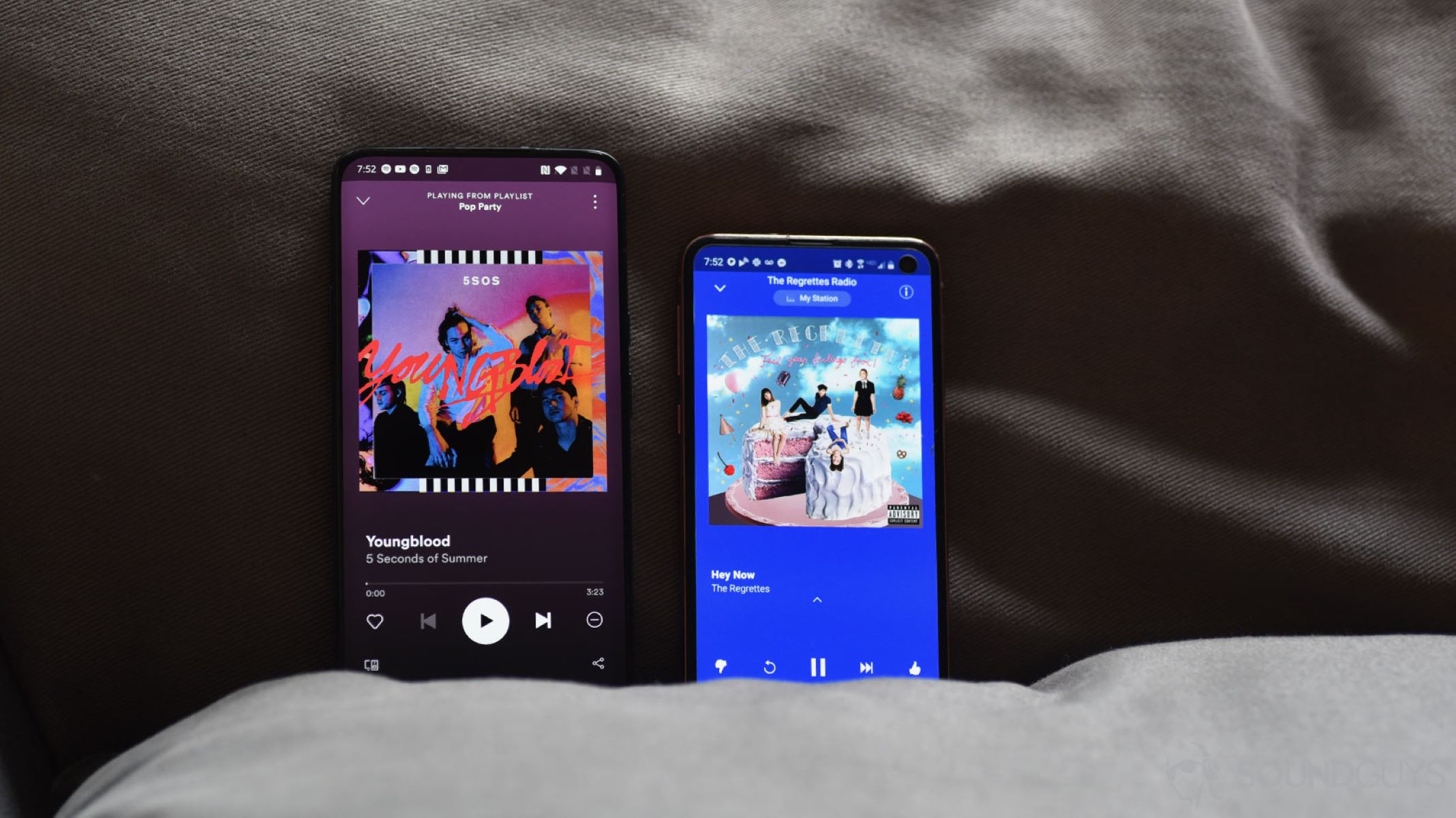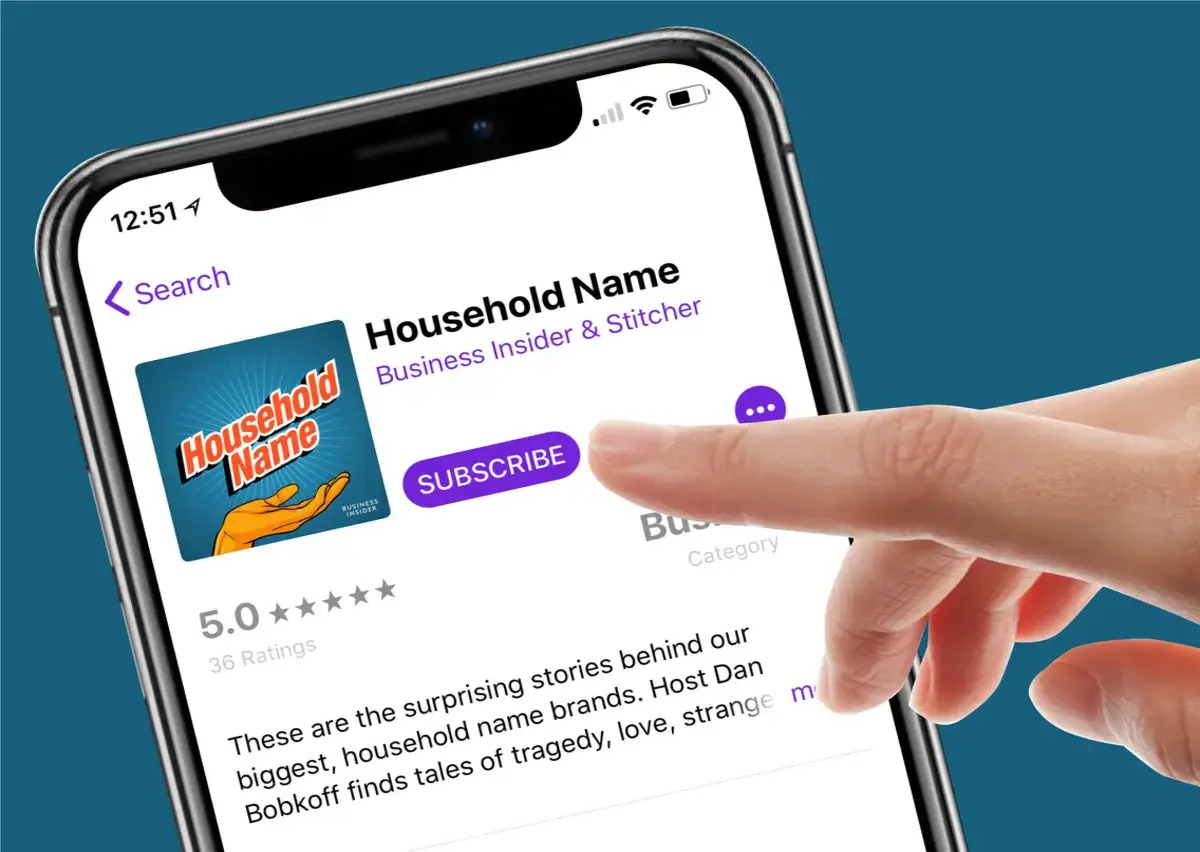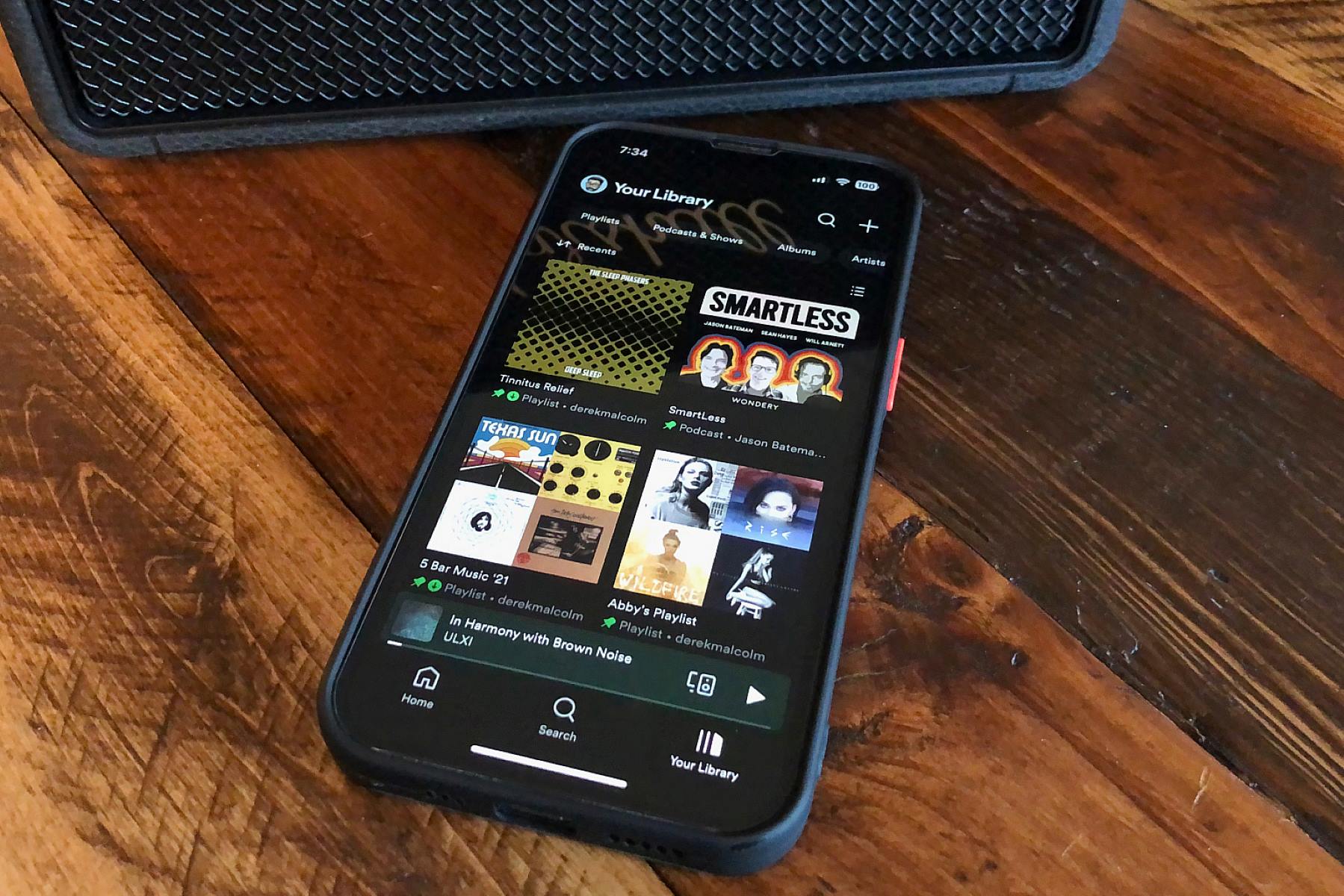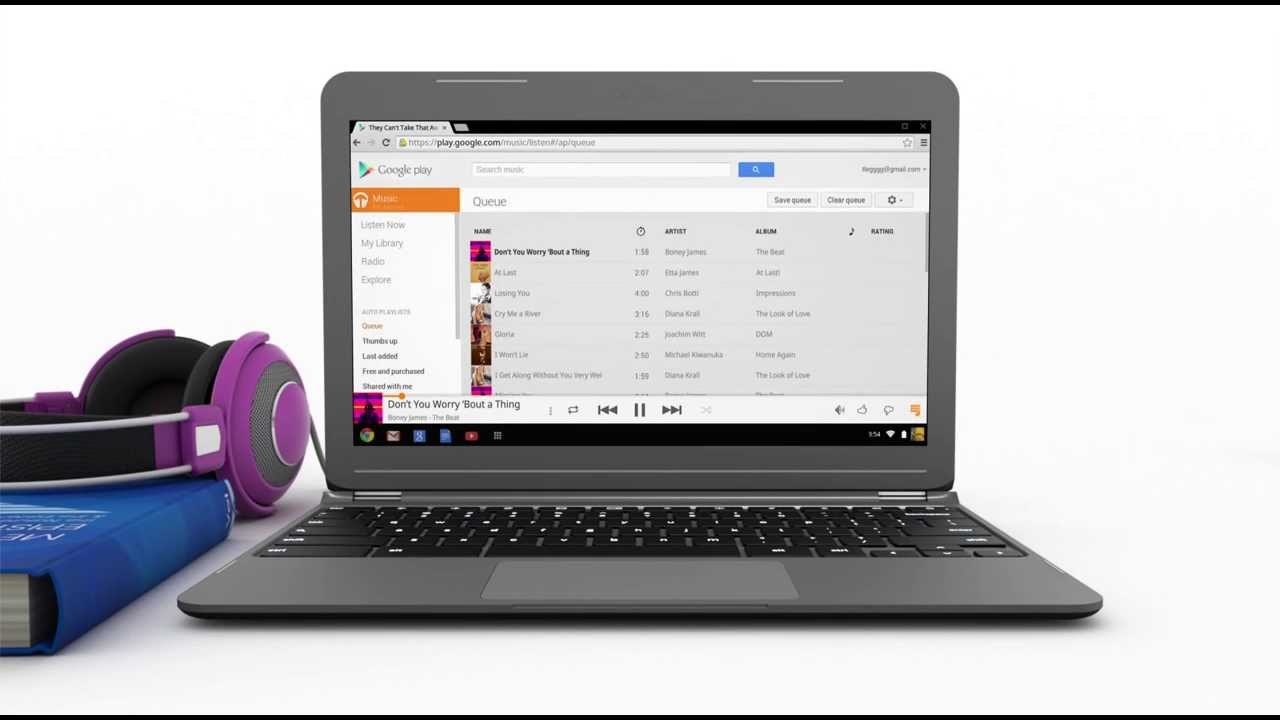Introduction
Welcome to the ultimate showdown between Pandora and Spotify, two of the most popular music streaming platforms available. In the age of digital music, these services have revolutionized the way we listen and discover new tunes. With their vast music libraries, personalized recommendations, and user-friendly interfaces, Pandora and Spotify have become the go-to choices for music enthusiasts around the world.
Both Pandora and Spotify offer a plethora of features and claim to provide the best listening experience. In this detailed comparison, we will dive deep into their similarities and differences, helping you decide which platform reigns supreme for your unique musical preferences.
Whether you’re a music aficionado or just enjoy having a background soundtrack to your daily activities, you’ll find everything you need to know in order to make an informed decision. So, let’s strap in and explore the world of Pandora and Spotify to see which one comes out on top!
Before we delve into the nitty-gritty, it’s important to understand the basic concept behind these services. Pandora and Spotify are both streaming platforms that allow you to access an extensive catalog of songs, albums, artists, and playlists. However, their approach to music recommendation and personalization sets them apart.
Pandora is best known for its personalized radio experience. The platform uses the Music Genome Project, an intricate algorithm that analyzes the musical characteristics of songs, to curate playlists based on your preferences. On the other hand, Spotify offers a more expansive library and focuses on giving users control over their listening experience, allowing them to create custom playlists and explore millions of songs.
Now that we have a general understanding of Pandora and Spotify, let’s dive into the specific features and aspects that will help you make an informed decision. We’ll evaluate factors such as ease of use, music library, personalization, features, sound quality, pricing model, availability, and social sharing. So, let the battle begin!
Ease of Use
When it comes to ease of use, both Pandora and Spotify have designed their platforms to provide a seamless and intuitive experience for users of all levels of tech-savviness.
Pandora boasts a simple and straightforward interface that allows users to start listening to their favorite music with just a few clicks. The platform offers a clean and clutter-free design, making it easy to navigate and discover new music. With its emphasis on personalized radio stations, Pandora’s main focus is on providing a hassle-free listening experience. Users can simply select a song, artist, or genre, and Pandora will generate a radio station tailored to their preferences.
On the other hand, Spotify takes a more comprehensive approach, offering a wider range of features and customization options. While this may make the platform appear more complex, Spotify’s user-friendly interface ensures that even first-time users can navigate the platform with ease. The app’s sleek design and intuitive menus allow users to quickly search for songs, create playlists, and explore curated content. With its emphasis on giving users control over their music choices, Spotify allows for a more personalized listening experience.
Both platforms also offer mobile apps for on-the-go listening. Pandora’s mobile app mirrors the simplicity of its web interface, allowing users to easily access their personalized radio stations and enjoy their favorite music while on the move. Spotify’s mobile app takes the customization options a step further, giving users the ability to create and edit playlists, download music for offline listening, and discover new music through curated playlists and personalized recommendations.
In terms of usability, both platforms excel at delivering a user-friendly experience. Whether you prefer the simplicity of Pandora or the greater control offered by Spotify, both platforms make it easy for users to discover and enjoy their favorite music.
However, if we had to choose a winner in terms of ease of use, Spotify takes the crown. Its intuitive interface, extensive feature set, and customization options provide a more versatile and user-friendly experience. While Pandora’s simplicity is commendable, Spotify’s ability to cater to both casual listeners and music enthusiasts is a testament to its usability.
Music Library
When it comes to music libraries, both Pandora and Spotify offer an extensive collection of songs, albums, and artists. However, there are some notable differences in the way they curate and organize their music.
Pandora’s music library focuses on delivering a personalized radio experience. The platform’s algorithm selects songs based on factors such as genre, mood, and musical characteristics. While Pandora’s catalog is substantial, it may not offer the same breadth of options as Spotify. This is because Pandora’s focus is on creating radio stations rather than providing access to every song imaginable. However, it excels in providing a seamless flow of music tailored to the user’s preferences.
On the other hand, Spotify’s music library is vast and diverse, with millions of songs available at your fingertips. Whether you’re looking for the latest hits, underground tracks, or timeless classics, Spotify has you covered. The platform continuously updates its library to ensure users have access to the most comprehensive selection of music. From mainstream artists to indie bands and niche genres, Spotify caters to all musical tastes.
In addition to its extensive library, Spotify also offers exclusive content, such as podcasts and live recordings, further enhancing the listening experience. This emphasis on variety and exclusivity gives Spotify an edge over Pandora in terms of music library depth and diversity.
Both platforms provide features for discovering new music. Pandora’s personalized radio stations introduce listeners to songs and artists they may not have discovered otherwise, based on their musical preferences. Spotify, on the other hand, offers a range of algorithms and curated playlists that help users explore new genres, discover emerging artists, and stay updated with the latest trends.
While both platforms offer a wide range of music, Spotify’s extensive collection, exclusive content, and powerful discovery features give it the upper hand in terms of music library. However, if you prefer a more curated and personalized radio experience, Pandora’s selection may be more in line with your taste.
Personalization
Personalization is a key factor in the success of any music streaming platform, as it allows users to discover new music that aligns with their individual tastes and preferences. Pandora and Spotify both aim to provide a personalized listening experience, albeit through different approaches.
Pandora is renowned for its personalized radio stations, which are created using the Music Genome Project. This project utilizes a sophisticated algorithm that analyzes the unique characteristics of each song, such as melody, lyrics, and instrumentation, to create custom playlists. Users can create stations based on a specific artist, genre, or song, and Pandora’s algorithm will generate a playlist of similar tracks tailored to their preferences. This level of personalization enables users to discover new music within the boundaries of their defined tastes.
Spotify, on the other hand, offers a wide range of personalization options that give users more control over their listening experience. The platform’s algorithms analyze users’ listening habits, playlists, and liked songs to create personalized playlists such as “Discover Weekly” and “Release Radar.” These playlists suggest songs and artists that align with the user’s interests, helping them discover new music that they may enjoy. In addition, Spotify’s “Daily Mix” feature provides a collection of songs based on the user’s favorite genres and artists, offering a personalized and ever-evolving soundtrack.
Furthermore, Spotify’s extensive range of curated playlists and recommendations based on mood, genre, and activity allows users to explore music outside of their usual preferences. By leveraging machine learning algorithms, Spotify offers a greater level of personalization and discovery, opening up doors to new musical territories.
In terms of personalization, both Pandora and Spotify excel in their respective approaches. Pandora’s focus on the Music Genome Project provides a unique and tailored radio experience, while Spotify’s wide array of customizable playlists and recommendations ensures that users have a personalized soundtrack for every occasion.
Ultimately, the choice between Pandora and Spotify for personalization comes down to personal preference. If you prefer a curated experience with radio stations that closely align with your tastes, Pandora is the way to go. However, if you want more control and a broader range of personalized recommendations, Spotify is the clear winner in this category.
Features
When it comes to features, Pandora and Spotify both offer a range of functionalities to enhance the listening experience. However, there are some notable differences that set them apart in terms of the features they provide.
Pandora’s key feature is its personalized radio stations. The Music Genome Project algorithm selects songs based on the user’s preferences, creating a continuous stream of music that fits their taste. Users can give songs a thumbs up or thumbs down to further refine their stations. Additionally, Pandora offers a “Browse” feature that allows users to explore curated playlists based on mood, activity, and genre.
Spotify, on the other hand, offers a more extensive set of features. Users can create and customize playlists, follow their favorite artists, and discover new music through personalized recommendations and curated playlists. Spotify’s social sharing feature allows users to connect with friends, share playlists, and collaborate on creating playlists together. The platform also offers collaborative playlists, where multiple users can contribute to the same playlist, making it perfect for group listening sessions.
Another notable feature of Spotify is its integration with various devices and platforms. Users can easily connect their Spotify accounts to smart speakers, gaming consoles, and cars, allowing for a seamless listening experience across different devices. Spotify also offers a standalone app for DJs and producers called “Spotify for Artists,” which allows them to share their music and connect with their audience.
Both Pandora and Spotify offer ad-supported free versions, as well as premium subscriptions that remove ads and provide additional features. Spotify’s premium subscription grants users unlimited skips, high-quality audio streaming, and the ability to download music for offline listening. Pandora’s premium subscription, Pandora Plus, offers features such as ad-free listening, unlimited skips, and offline playback.
While both platforms offer a range of features to enhance the music streaming experience, Spotify’s extensive playlist customization options, social sharing features, and integration with other devices give it an edge in terms of features. If you value customization and the ability to connect with others through music, Spotify is the clear winner in this category.
Sound Quality
When it comes to music streaming, sound quality plays a crucial role in delivering an immersive and enjoyable listening experience. Both Pandora and Spotify strive to provide high-quality audio, but there are some differences in the way they handle sound quality.
Pandora offers a free version with standard audio quality of up to 192kbps, which is suitable for most casual listeners. However, for users who value superior sound quality, Pandora also provides a premium option called Pandora Plus. With Pandora Plus, users can enjoy ad-free listening and enhanced audio quality, with the option to stream music at 320kbps. This higher bitrate allows for more detailed and impactful audio, providing a more immersive listening experience.
Spotify also offers a free version with standard audio quality, which is typically around 96kbps on mobile devices and 160kbps on desktops. However, Spotify’s premium subscription, known as Spotify Premium, unlocks the highest quality audio streaming. Premium users can enjoy music at a bitrate of up to 320kbps, offering crisp and clear sound reproduction that is closer to CD quality. Additionally, Spotify Premium also allows users to enable the “High Quality Streaming” option, which further enhances the audio quality during playback.
In terms of sound quality, Spotify’s premium subscription clearly outshines Pandora. The ability to stream music at a higher bitrate and enable high-quality streaming makes a noticeable difference in the overall audio experience. However, it’s worth noting that the difference in sound quality may not be as pronounced when using lower-end audio devices or listening in noisy environments.
Ultimately, if sound quality is a top priority for you, Spotify Premium provides the superior option. However, for casual listeners who are not as concerned about pristine audio quality, Pandora’s free version or Pandora Plus may be sufficient.
Pricing Model
When it comes to pricing, both Pandora and Spotify offer a mix of free and premium subscription options to cater to different user needs and budgets.
Pandora offers a free version of its service, supported by ads. This allows users to access the basic features, create personalized radio stations, and discover new music. For those who want an enhanced listening experience, Pandora offers Pandora Plus, a premium subscription priced at a reasonable monthly fee. Pandora Plus provides an ad-free experience, unlimited skips, and the ability to listen offline.
Spotify also offers a free version with ads that allows users to access its basic features, including personalized playlists and recommendations. However, to unlock the full potential of Spotify, users can subscribe to Spotify Premium. This premium subscription comes at a higher monthly cost but offers significant advantages, such as ad-free listening, unlimited skips, high-quality audio streaming, and offline playback. Spotify also provides additional subscription options, such as Spotify Student, Spotify Family, and Spotify Duo, tailored to specific user groups.
The pricing of Pandora Plus and Spotify Premium varies depending on factors such as location and promotional offers. It’s important to note that both platforms may occasionally offer discounted or bundled subscription options, so it’s worth keeping an eye out for special deals and promotions.
Overall, when comparing the pricing models, Spotify’s premium subscription options offer more advanced features and flexibility, making it a better value for users who are willing to invest in a premium listening experience. However, for those who are content with the basic features and can tolerate occasional ads, both platforms provide a free option that allows for music streaming without any upfront costs.
Ultimately, the choice between Pandora and Spotify’s pricing models will depend on your budget and the level of features and convenience you desire. Assessing your priorities and comparing the features and costs of each platform will help you make an informed decision.
Availability
When it comes to availability, both Pandora and Spotify have made their platforms accessible across various devices and operating systems, ensuring that users can enjoy their music anytime and anywhere.
Pandora is available in the United States, Australia, and New Zealand. While its availability may be more limited compared to Spotify, it has established a strong presence in the countries it operates in. Pandora offers web-based streaming, allowing users to access their favorite music directly from their browsers. It also provides dedicated mobile apps for iOS and Android devices, so users can enjoy Pandora on the go. However, it’s important to note that Pandora’s services may be restricted or unavailable outside of the countries it operates in.
Spotify, on the other hand, has a much wider reach and is available in over 170 countries worldwide. Whether you’re in North America, Europe, Asia, or any other part of the world, chances are, Spotify is available in your region. Like Pandora, Spotify offers a web player for browser-based streaming as well as dedicated mobile apps for iOS and Android devices. Furthermore, Spotify has also expanded its availability to other devices such as smart TVs, gaming consoles, and smart speakers, allowing users to enjoy their music seamlessly across various platforms.
In terms of availability, Spotify clearly has the edge with its extensive reach across the globe. Whether you’re traveling or setting up your favorite tunes at home, Spotify provides a wider range of options for accessing your music library and playlists. However, if you reside in one of the countries where Pandora operates, it can still be a great choice for personalized radio stations and a curated listening experience.
Regardless of which platform you choose, both Pandora and Spotify ensure that their services are accessible on multiple devices and operating systems, giving users the freedom to enjoy their music wherever they go.
Social Sharing
Social sharing has become an integral part of the music streaming experience, allowing users to connect with friends, share their favorite playlists, and discover new music through their social networks. Both Pandora and Spotify recognize the importance of social sharing and have implemented features that facilitate this aspect of the music streaming experience.
Spotify excels in social sharing capabilities, allowing users to connect their accounts with platforms such as Facebook and Twitter. Users can share their favorite songs, albums, and playlists directly to these social media platforms, letting their friends and followers know what they’re currently listening to. Additionally, Spotify offers collaborative playlists, enabling multiple users to contribute and curate a playlist together. This feature comes in handy for creating playlists for parties, road trips, or collaborative projects.
Pandora also offers social sharing features, although its capabilities are more limited compared to Spotify. Pandora allows users to connect their accounts with Facebook, providing the option to share their stations and favorite tracks on their Facebook timeline. While Pandora lacks the ability to create collaborative playlists like Spotify, it compensates with a focus on discovery through personalized radio stations. Users can still interact and connect with friends on Pandora, exploring their friends’ shared stations and finding new music recommendations.
Both platforms offer built-in messaging systems that allow users to share songs, albums, and playlists directly with each other. This adds a personalized touch to the social sharing experience, allowing users to have more direct and private interactions around music.
Overall, Spotify’s social sharing features are more comprehensive and robust, allowing for easier integration with popular social media platforms and collaborative playlist creation. However, Pandora still offers a social component that enhances the music streaming experience, albeit with more limited sharing options.
Whether you prefer the extensive social sharing options provided by Spotify or are content with the basic social sharing features of Pandora, both platforms allow users to engage with their friends and followers, discover new music, and share their favorite tracks with the world.
Conclusion
After a thorough comparison of Pandora and Spotify, it’s clear that both platforms have their own unique strengths and features that cater to different user preferences. Ultimately, the choice between the two will depend on your specific needs and priorities when it comes to music streaming.
If you value a personalized radio experience and enjoy discovering new music based on specific artists, genres, or moods, Pandora is an excellent choice. Its Music Genome Project algorithm generates customized radio stations tailored to your preferences, providing a seamless flow of music that aligns with your taste.
On the other hand, if you prefer greater control over your music library, extensive customization options, and the ability to explore millions of songs and curated playlists, Spotify is the clear winner. Its vast music library, powerful recommendation algorithms, and social sharing features create a dynamic and immersive listening experience.
In terms of availability, Spotify has a global reach, being available in over 170 countries, while Pandora is limited to select regions. This should be a factor to consider if you are located outside the countries where Pandora operates.
Sound quality is another important consideration. While both platforms offer high-quality audio options, Spotify’s premium subscription provides a higher bitrate and the option for lossless streaming, resulting in a more detailed and immersive listening experience.
Finally, pricing is a determining factor for many users. Both Pandora and Spotify offer free versions with ads, as well as premium subscriptions that remove ads and provide additional features. Spotify’s premium subscription offers more comprehensive features and customization options, making it a better value for users seeking a premium listening experience.
In conclusion, Pandora and Spotify are both exceptional music streaming platforms that cater to different user preferences. Whether you prioritize personalized radio stations with an emphasis on discovery or a vast library with customization options and social sharing features, there is a platform that will suit your needs. Consider your music preferences, desired features, availability, sound quality requirements, and pricing options to make an informed decision and enjoy a seamless and enjoyable music streaming experience.









![How To Download Music Safe and Fast [GUIDE]](https://robots.net/wp-content/uploads/2022/04/how-to-download-music-featured-300x175.jpg)















